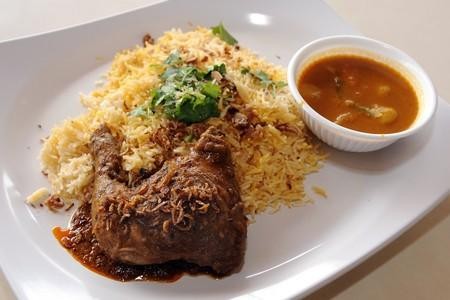India's briyani wars

Biryani, the centrepiece of countless Indian holidays and weddings - where it regularly upstages the cake - is at the centre of a contentious cultural firestorm.
If India had a national food, one contender up there with rotis, dal or samosas might be the spiced, multi-layered rice dish known as biryani.
This rich, celebratory fare was most likely bestowed on the subcontinent by the Persian and Central Asian rulers who also gave India the exquisite Taj Mahal.
Now, biryani, the centrepiece of countless holidays and weddings in India - where it regularly upstages the cake - is at the centre of a cultural firestorm.
Police in parts of Haryana state in northern India have taken the extreme measure of checking dishes of mutton biryani at public eateries to ensure they don't contain beef.
Not only does India's Hindu majority mostly not eat the meat of this sacred animal, but slaughtering cows is illegal in most of India, including Haryana, where a 2015 law dictates up to 10 years in prison.
More than 20 Indian states forbid either cow slaughter, beef eating or both.
"We have been getting lots of complaints that beef is mixed in the biryani in Mewat district so I have ordered the police to physically check the biryani sold in eateries there," Haryana Cow Service Commission Chairman Bhani Ram Mangla told the BBC World Service's Amitabha Bhattasali.
Considering India's incredible diversity - of people and food - sensitivity to such issues is not surprising.
Like its bustling markets and heady masalas, India itself is a dizzying jumble of religions, languages, cultures and cuisines.
"Food is a marker of identity, be that ethnic, religious, socio-economic or personal, so humans might be particularly sensitive when that part of their identity is challenged or questioned," said Carol Helstosky, associate professor of history at the University of Denver.
Take biryani, for example.
There are at least as many ways to prepare the dish as there are states in India.
Read the full article here